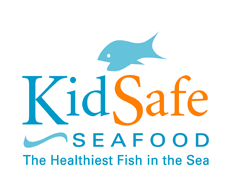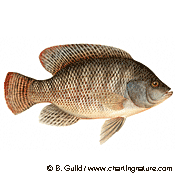 |
|
 |
|
 Tilapia (US/Central American)
Tilapia (US/Central American)
With a light, mild and never "fishy"taste, tilapia is a great introduction to seafood for your kids.
How to shop for it
KidSafe Seafood strongly recommends that you buy fresh fillets. Virtually all frozen tilapia comes from China, where tilapia farms have problems with pollution and other environmental issues.
Look for tilapia from the United States, which are raised according to the highest standards. If you can't find it, look for tilapia from Ecuador or other Latin American countries, which are good alternatives.
You'll notice a variation in skin color—from reddish-pink to brown—but it is unrelated to taste.
How to cook it
Tilapia is a highly versatile fish that can be prepared quickly in a variety of kid-friendly meals:
- Try broiling tilapia fillets for about 5 min on a side. Garlic, lemon juice, melted butter and/or soy sauce can be poured or brushed on top before broiling to add more flavor.
- Use tilapia in fish tacos, fish sandwiches, or fish sticks. Toss bites of tilapia into your child's favorite pasta dish.
More about Tilapia
Tilapia in our stores and restaurants is no longer caught in the wild, but rather raised on fish farms around the world. The standards for these farming operations vary greatly from country. Those in the US operate according to the highest environmental standards—using closed, recirculating systems that prevent pollution and other harm to the surrounding natural environment.
Since tilapia eat mostly algae and aquatic plants, they have limited opportunities to absorb contaminants, like mercury, from their food. In many cases, contaminant advisories are given for fish high up the food chain, like tuna or sharks. These fish eat lots of smaller fish with low contaminant levels, so the contaminants build up as more small fish are eaten. Plant-eating tilapia are low on the food chain and can't accumulate contaminants this way.
Home - Site Map - Privacy Policy - Donate - SeaWeb - Contact Us
© 2011 KidSafe Seafood